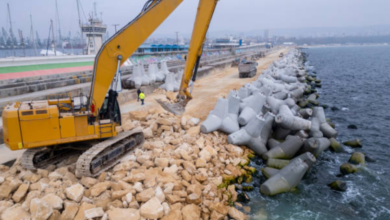Pipeline Ownership: Understanding Control Responsibility in Energy Infrastructure

Pipelines are the arteries of the modern energy economy. They transport crude oil, natural gas, petroleum products, and even emerging resources such as hydrogen and carbon dioxide across vast distances. These systems connect production fields to refineries, power plants, and consumers, ensuring a steady flow of energy that sustains both daily life and industrial growth.
At the center of this network lies a critical but often overlooked question: pipeline ownership. Who owns the pipelines, and what does ownership mean for regulation, accountability, economics, and safety? The concept of pipeline ownership is complex, involving a combination of private corporations, government oversight, and sometimes joint ventures between multiple entities.
This article explores the meaning and implications of pipeline ownership, examining its history, structure, legal frameworks, challenges, and future directions.
What Does Pipeline Ownership Mean?
Pipeline ownership refers to the legal and financial control of a pipeline system, including the right to construct, operate, and collect revenue from the transportation of energy products. Ownership typically includes:
- Physical Control: Responsibility for the construction, maintenance, and operation of the pipeline.
- Financial Rights: Ability to earn income by charging tariffs or fees for transporting energy products.
- Legal Accountability: Obligation to comply with state and federal regulations, ensure safety, and address environmental risks.
Ownership is not always straightforward. A single pipeline may be owned outright by one company, jointly owned by multiple partners, or controlled by subsidiaries and affiliates of larger corporations.
Types of Pipeline Ownership
Pipeline ownership can take several forms, depending on the nature of the infrastructure and the entities involved:
1. Private Corporate Ownership
Most pipelines in the United States and globally are owned by private energy companies. These companies may be:
- Integrated Energy Firms: Large corporations such as ExxonMobil, Chevron, or Shell, which own pipelines as part of broader operations.
- Midstream Companies: Firms like Kinder Morgan, Enbridge, or Williams, which specialize in transportation and storage infrastructure.
- Master Limited Partnerships (MLPs): Investment vehicles that allow investors to buy shares in pipeline companies, generating income through pipeline fees.
2. Government or State Ownership
In some countries, governments own and operate major pipelines, especially where energy resources are nationalized. For example:
- Transneft in Russia manages state-owned oil pipelines.
- Petrobras in Brazil owns portions of the country’s pipeline infrastructure.
- In the U.S., most ownership is private, though some municipal utilities own small distribution pipelines.
3. Joint Ventures
Pipeline ownership is often shared among multiple companies to spread costs and risks. For example, large interstate pipelines may be co-owned by several energy firms that use the infrastructure to move their products.
4. Utility Ownership
Local utilities, such as gas distribution companies, own pipelines that deliver natural gas directly to households and businesses. These smaller pipelines are regulated at the state level.
See also: Techoelitecom: Exploring the Tech Elite
Legal and Regulatory Framework of Pipeline Ownership
Ownership of pipelines carries legal obligations. In the U.S., regulations governing pipeline ownership and operation are extensive and involve both federal and state agencies.
- Federal Energy Regulatory Commission (FERC): Regulates interstate natural gas pipelines, overseeing rates, tariffs, and expansion projects.
- Pipeline and Hazardous Materials Safety Administration (PHMSA): Enforces safety regulations across all pipelines, both interstate and intrastate.
- State Agencies: Bodies such as the Texas Railroad Commission regulate intrastate pipelines within state borders.
Pipeline owners must comply with laws governing:
- Safety standards and inspections
- Environmental protections
- Eminent domain rights for land access
- Public utility obligations in some cases
Economic Dimensions of Pipeline Ownership
Ownership of pipelines represents not just operational control but also significant economic power.
Revenue Generation
Pipeline owners generate income through transportation fees (tariffs) paid by producers, refiners, and utilities. For example, natural gas pipeline owners charge fees per unit of gas transported, based on distance and capacity.
Investment Value
Pipelines are considered stable, long-term investments because energy demand remains relatively steady. As a result, ownership stakes in pipeline companies often attract pension funds, institutional investors, and private equity firms.
Market Influence
Owners of key pipeline networks can influence regional energy markets by controlling the flow of resources. For instance, pipeline bottlenecks in areas like the Permian Basin in Texas can affect crude oil prices nationwide.
Responsibilities of Pipeline Owners
With ownership comes responsibility. Pipeline owners must manage:
- Safety and Maintenance – Regular inspections, leak detection, and repair programs to prevent accidents.
- Environmental Protection – Minimizing spills, controlling emissions, and restoring land after construction.
- Community Engagement – Working with landowners and communities affected by pipeline routes.
- Emergency Preparedness – Developing and maintaining response plans for accidents, natural disasters, or terrorist threats.
Failures in these responsibilities can lead to catastrophic consequences, including accidents, lawsuits, and loss of public trust.
Challenges of Pipeline Ownership
Owning and operating pipelines is not without challenges:
1. Regulatory Complexity
Owners must navigate overlapping state and federal laws, which can vary widely across jurisdictions.
2. Environmental Opposition
Pipeline projects often face strong opposition from environmental groups and local communities, delaying or halting construction.
3. Aging Infrastructure
Many pipelines in the U.S. were built decades ago and require costly upgrades to meet modern safety standards.
4. Climate Change and Energy Transition
As the world shifts toward renewable energy, the long-term value of pipeline ownership may be questioned, especially for oil and gas pipelines.
5. Geopolitical Risks
International pipelines may face risks from political instability, cross-border disputes, or sanctions.
Pipeline Ownership in the U.S. vs. Globally
Ownership structures differ across regions:
- United States: Predominantly private ownership by midstream companies and investors, regulated by federal and state agencies.
- Canada: A mix of private and public ownership, with government involvement in some pipelines like Trans Mountain.
- Europe: Pipelines are often state-owned or heavily regulated, reflecting the importance of energy security.
- Asia and the Middle East: Many pipelines are owned by state-run oil and gas companies, reflecting national control over resources.
Case Studies of Pipeline Ownership
Kinder Morgan (U.S.)
One of the largest pipeline operators in North America, Kinder Morgan owns and operates tens of thousands of miles of natural gas, crude oil, and product pipelines. Its ownership model relies heavily on investors through MLP structures.
Transneft (Russia)
A state-owned company, Transneft owns the world’s largest pipeline system, moving crude oil across Russia and to export markets. Ownership here is closely tied to national policy.
Trans Mountain Pipeline (Canada)
Initially privately owned, the Canadian government purchased the Trans Mountain pipeline in 2018 to ensure expansion amid opposition. This reflects how ownership can shift from private to public for strategic reasons.
The Future of Pipeline Ownership
Pipeline ownership is evolving in response to global energy transitions. Some future trends include:
- Hydrogen Pipelines – As hydrogen gains traction as a clean fuel, new ownership structures may emerge for pipelines dedicated to hydrogen transport.
- Carbon Capture and Storage (CCS) – Pipelines transporting carbon dioxide to sequestration sites may create new markets for ownership and investment.
- Digital Transformation – Ownership will increasingly involve managing digital infrastructure, including monitoring systems, AI, and cybersecurity.
- Public-Private Partnerships – Governments may partner with private companies to fund and build new infrastructure for emerging energy resources.
- Divestment from Fossil Fuels – As climate policies strengthen, some traditional pipeline owners may divest from oil and gas pipelines, selling assets to specialized infrastructure firms.
Conclusion
Pipeline ownership is a cornerstone of the global energy system. It determines who controls, profits from, and is responsible for one of the most critical pieces of infrastructure in modern society. Whether in the hands of private corporations, governments, or joint ventures, ownership brings both economic opportunity and significant responsibility.
As the world faces new energy challenges — from the need for cleaner fuels to the risks of climate change — the landscape of pipeline ownership is shifting. Emerging fuels like hydrogen, renewable natural gas, and carbon dioxide transport will likely redefine what it means to own a pipeline in the coming decades.




